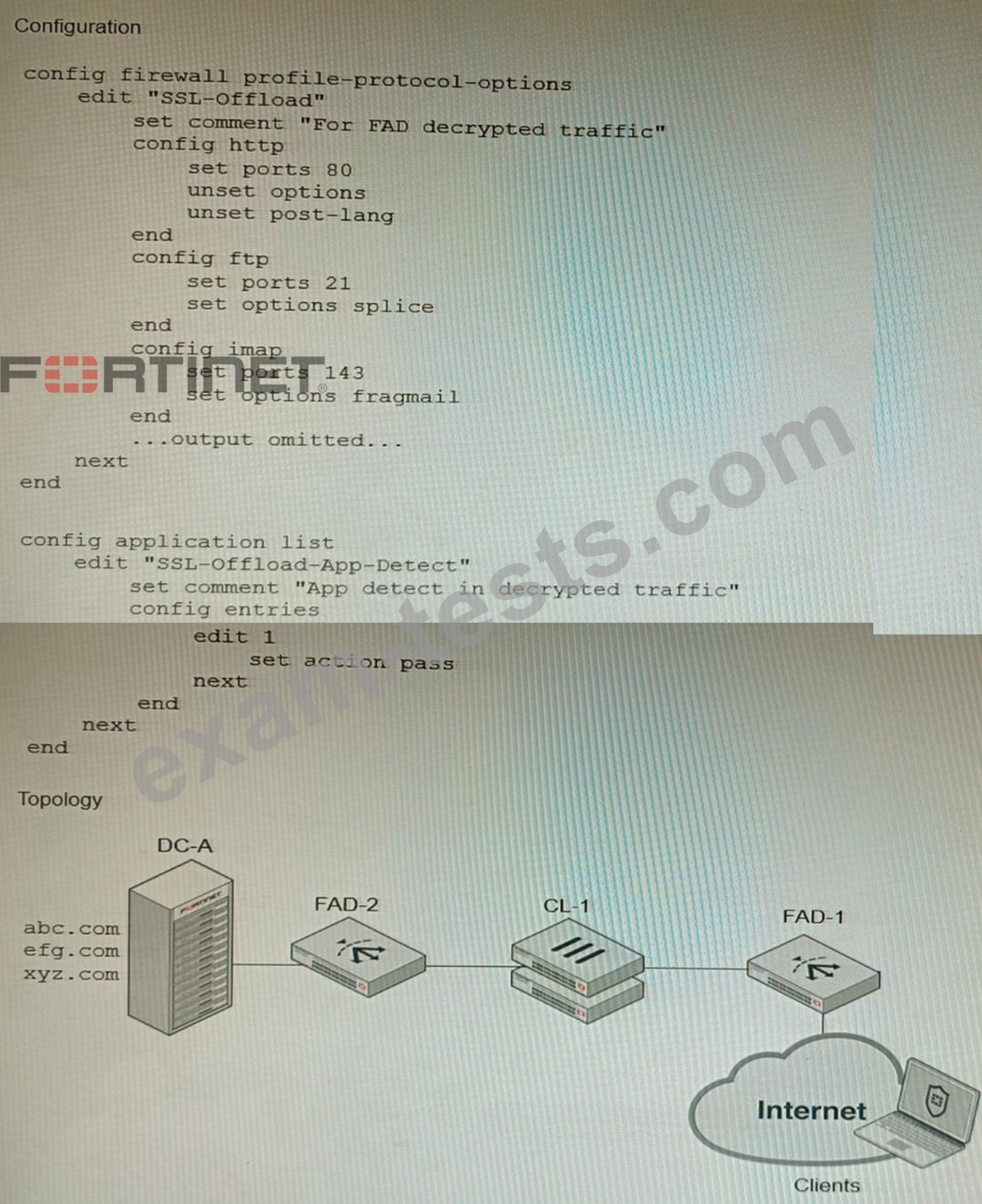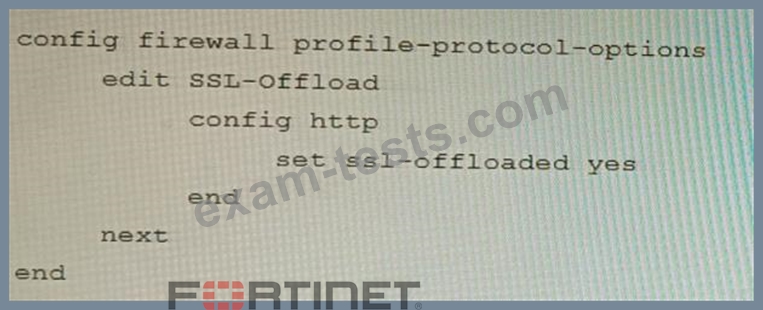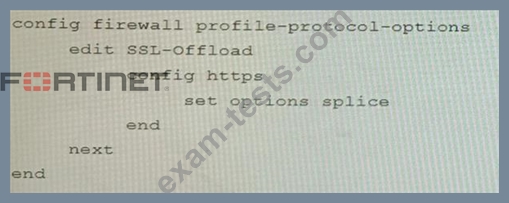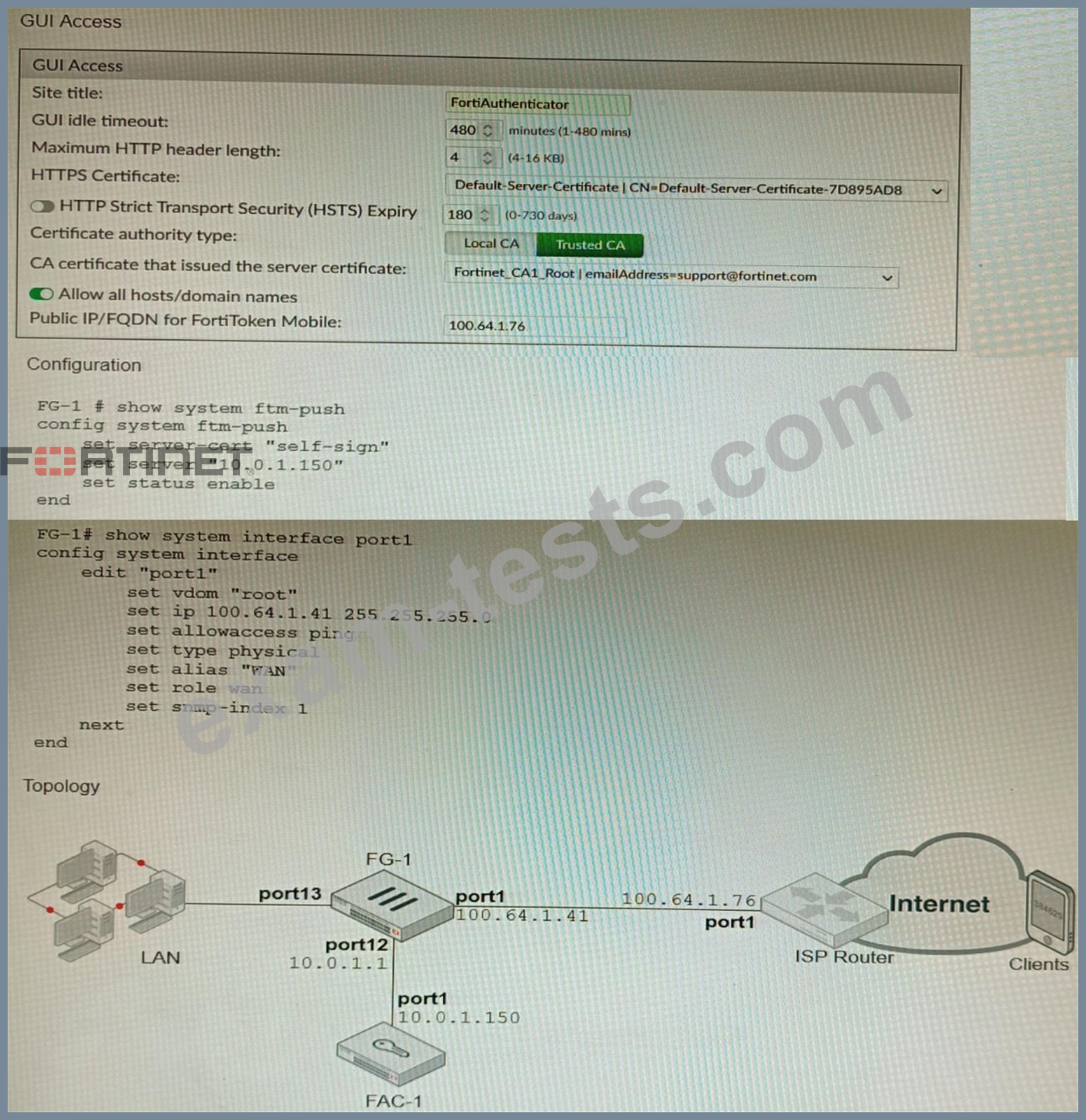Question 31
Refer to the exhibits.

A FortiGate cluster (CL-1) protects a data center hosting multiple web applications. A pair of FortiADC devices are already configured for SSL decryption (FAD-1), and re-encryption (FAD-2). CL-1 must accept unencrypted traffic from FAD-1, perform application detection on the plain-text traffic, and forward the inspected traffic to FAD-2.
The SSL-Offload-App-Detect application list and SSL-Offload protocol options profile are applied to the firewall policy handling the web application traffic on CL-1.
Given this scenario, which two configuration tasks must the administrator perform on CL-1? (Choose two.) A)

B)




A FortiGate cluster (CL-1) protects a data center hosting multiple web applications. A pair of FortiADC devices are already configured for SSL decryption (FAD-1), and re-encryption (FAD-2). CL-1 must accept unencrypted traffic from FAD-1, perform application detection on the plain-text traffic, and forward the inspected traffic to FAD-2.
The SSL-Offload-App-Detect application list and SSL-Offload protocol options profile are applied to the firewall policy handling the web application traffic on CL-1.
Given this scenario, which two configuration tasks must the administrator perform on CL-1? (Choose two.) A)

B)



Question 32
A remote worker requests access to an SSH server inside the network. You deployed a ZTNA Rule to their FortiClient. You need to follow the security requirements to inspect this traffic.
Which two statements are true regarding the requirements? (Choose two.)
Which two statements are true regarding the requirements? (Choose two.)
Question 33
A remote IT Team is in the process of deploying a FortiGate in their lab. The closed environment has been configured to support zero-touch provisioning from the FortiManager, on the same network, via DHCP options. After waiting 15 minutes, they are reporting that the FortiGate received an IP address, but the zero-touch process failed.
The exhibit below shows what the IT Team provided while troubleshooting this issue:

Which statement explains why the FortiGate did not install its configuration from the FortiManager?
The exhibit below shows what the IT Team provided while troubleshooting this issue:

Which statement explains why the FortiGate did not install its configuration from the FortiManager?
Question 34
Refer to the exhibits.

An administrator has configured a FortiGate and Forti Authenticator for two-factor authentication with FortiToken push notifications for their SSL VPN login. Upon initial review of the setup, the administrator has discovered that the customers can manually type in their two-factor code and authenticate but push notifications do not work Based on the information given in the exhibits, what must be done to fix this?

An administrator has configured a FortiGate and Forti Authenticator for two-factor authentication with FortiToken push notifications for their SSL VPN login. Upon initial review of the setup, the administrator has discovered that the customers can manually type in their two-factor code and authenticate but push notifications do not work Based on the information given in the exhibits, what must be done to fix this?
Question 35
Refer to the exhibit, which shows the high availability configuration for the FortiAuthenticator (FAC1).

Based on this information, which statement is true about the next FortiAuthenticator (FAC2) member that will join an HA cluster with this FortiAuthenticator (FAC1)?

Based on this information, which statement is true about the next FortiAuthenticator (FAC2) member that will join an HA cluster with this FortiAuthenticator (FAC1)?


